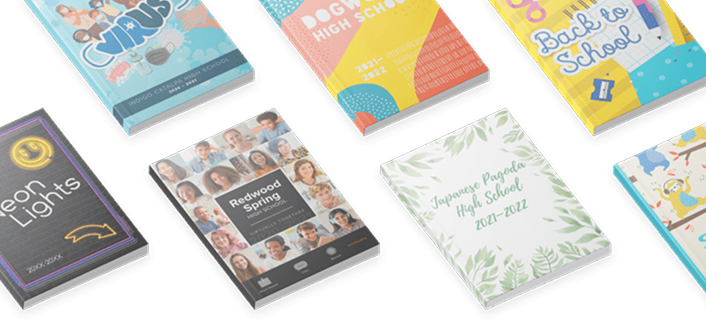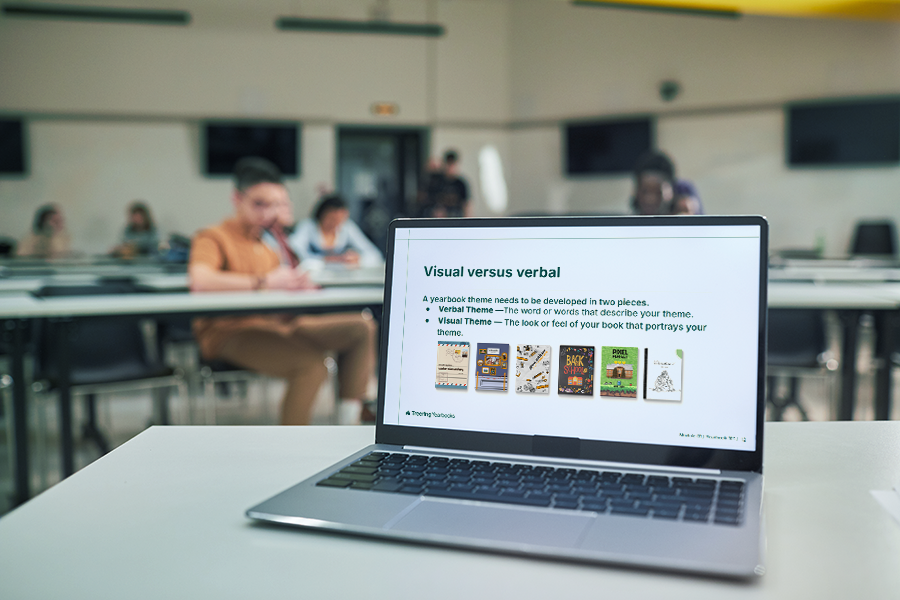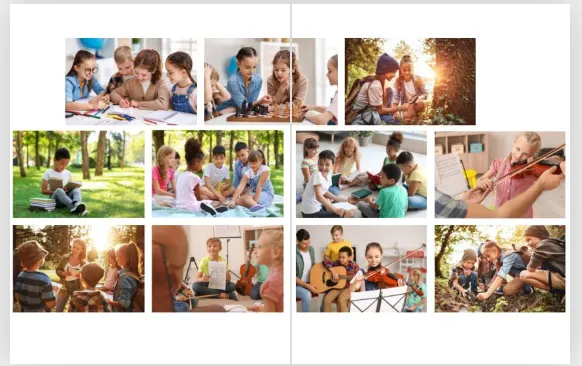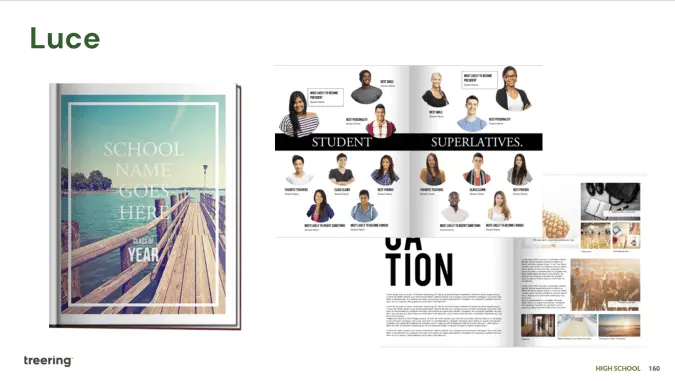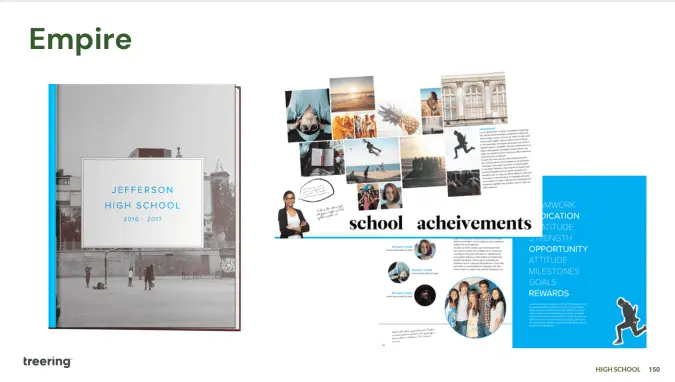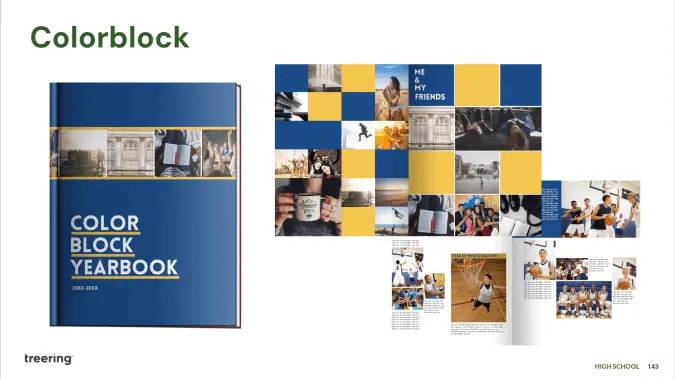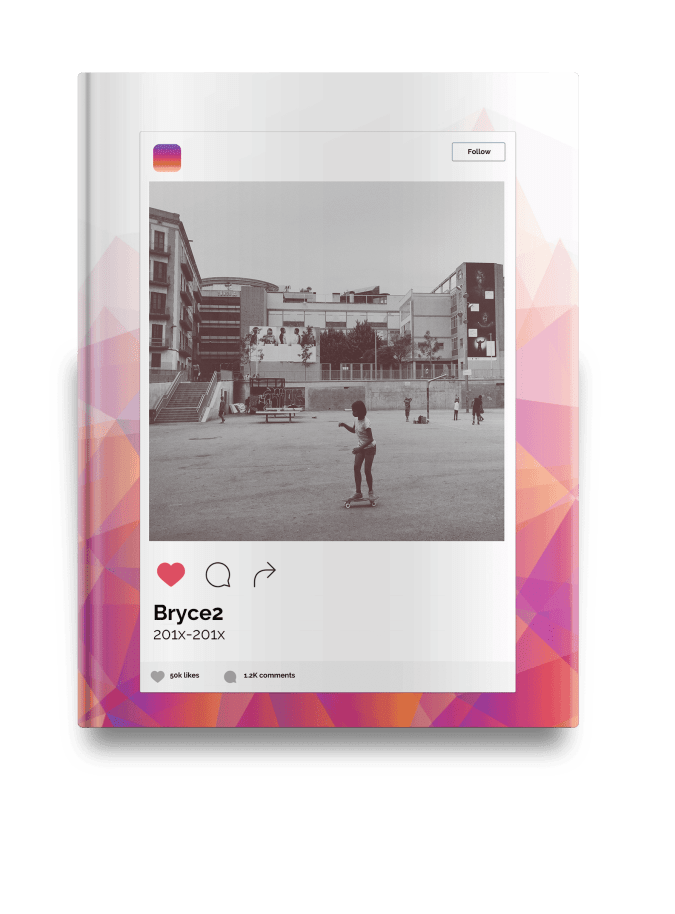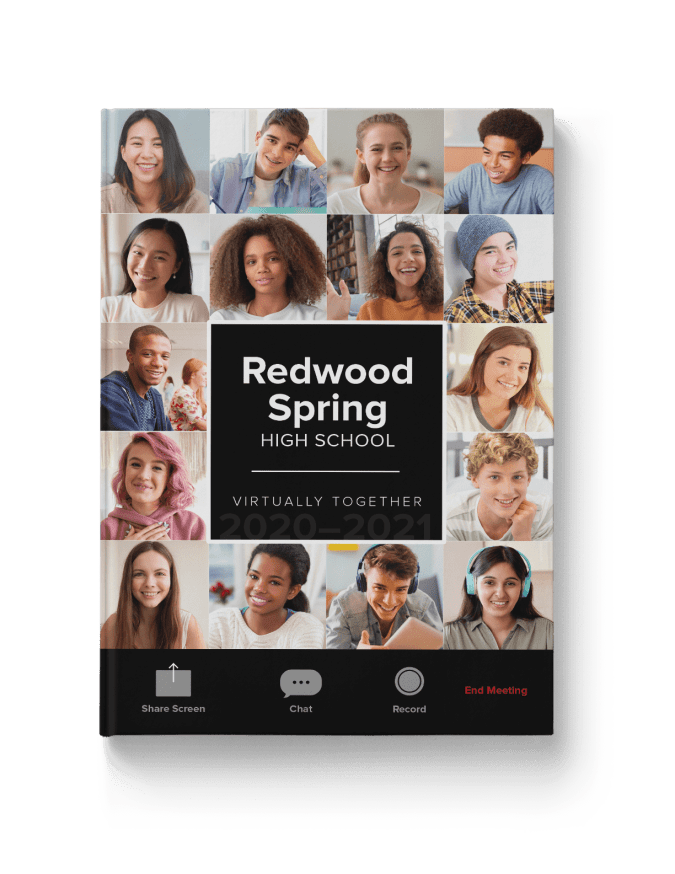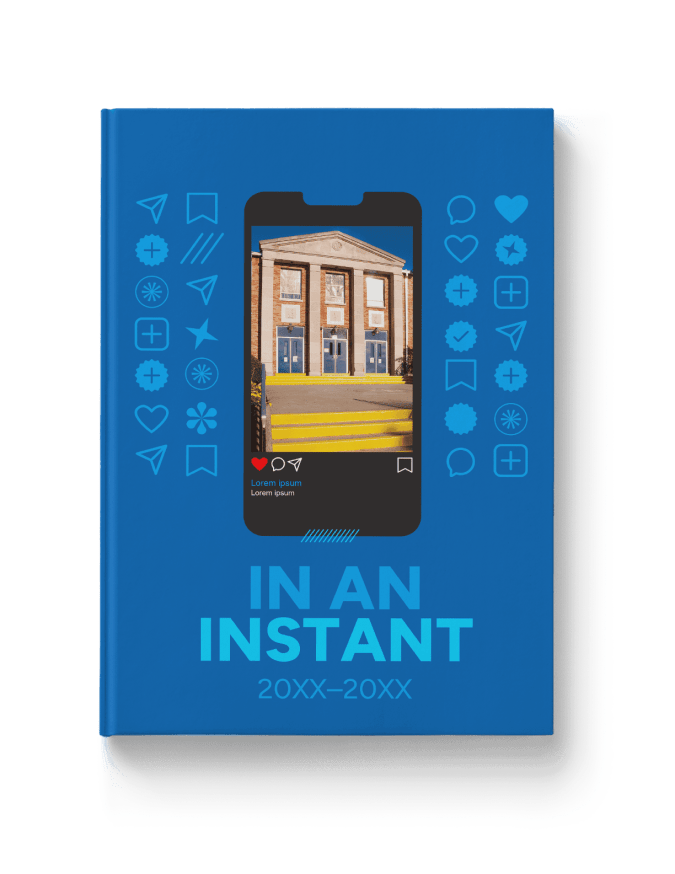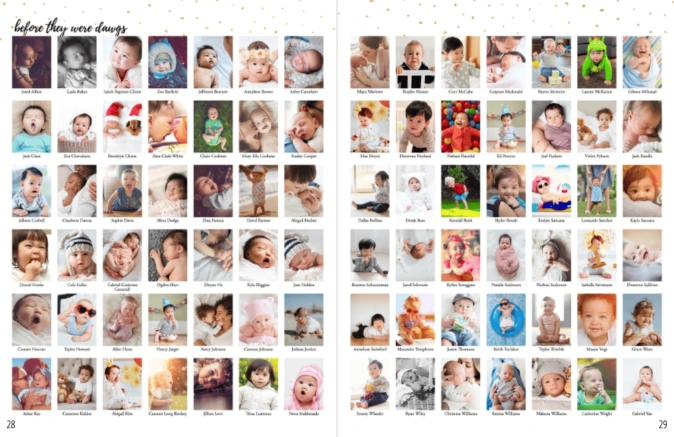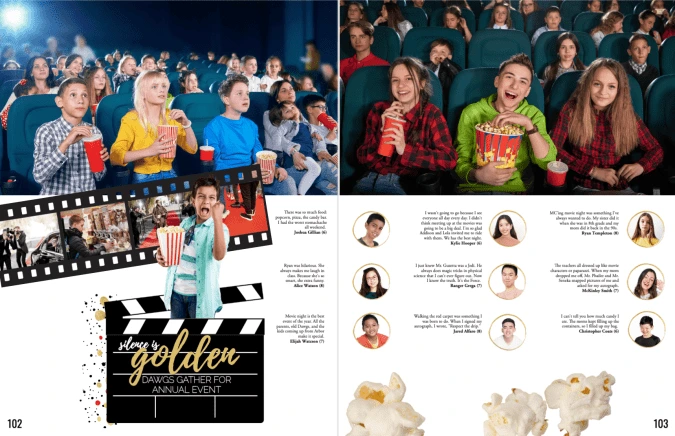Most popular
Subscribe to our blog
Most recent
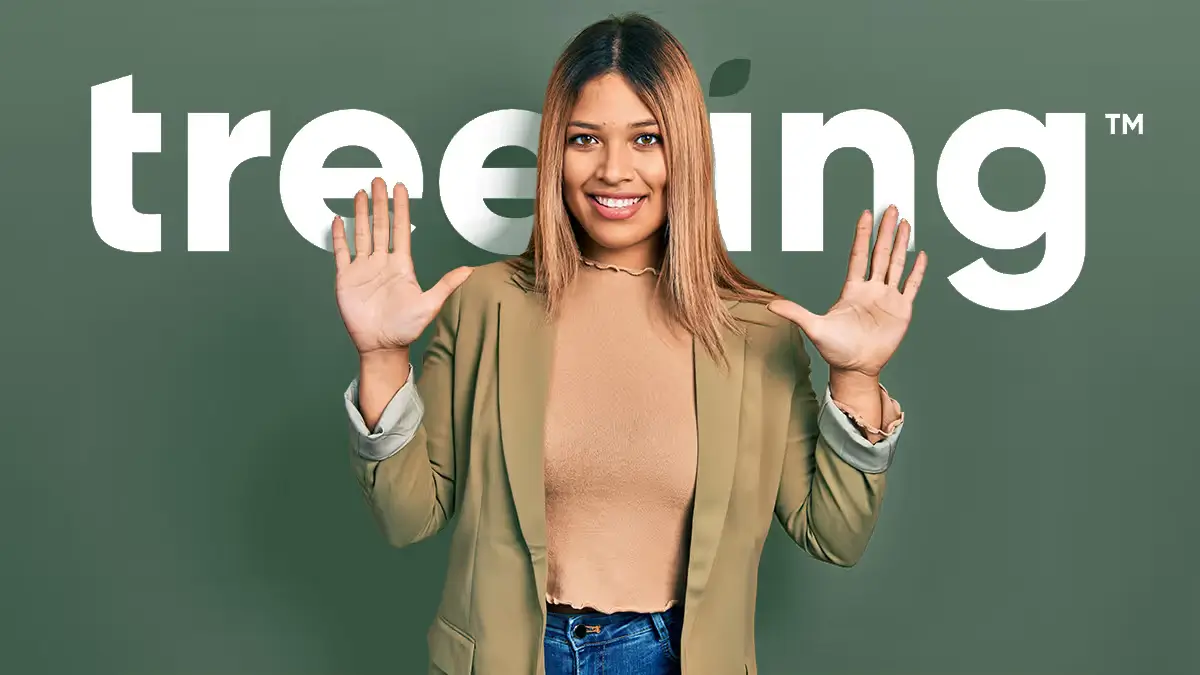
Top 10 reasons to join Treering Yearbooks
1. No contracts, no commitment
We offer a $0 financial commitment to all of our school partners. There are no minimum orders, no commitments, and never any leftover books. Parents and students can purchase a copy of their yearbook directly from Treering's sales portal. We only print what’s ordered, which means there won’t be any additional cost to your school.
2. Easy, yet powerful software
We make things easier on you so you're not always the last one in the building this spring. The headaches from building your portrait pages and designing your book are magically cured with powerful automated tools and template-based, drag-and-drop pages.
3. Affordable prices
We believe that every student should have the right to celebrate their year through the culture of the yearbook. We’re democratizing the yearbook and making it affordable for everyone by investing in technology to improve efficiencies and keep costs down.
4. Personalized pages
Ever struggle to make sure each student feels included in your yearbook? With Treering every student gets two free, uniquely printed pages, so they can fill their yearbook with personal memories. Since parents and students use our template-based software to create their own pages, there is no extra work for you, the yearbook editor. But don't worry, unless you invite them, parents and students cannot work on the yearbook itself. That's still in the hands of you and your yearbook team.
5. School fundraiser
We're helping schools regain control of their budgets: Treering gives you the ability to add a fundraiser amount to the cost of each yearbook. We also make selling recognition ads (should you want to) super easy: just set the price per size and let parents decide if they'd like to purchase. Since we only print the books that are purchased, your fundraising efforts can fund new laptops or a STEM program rather than covering the cost of leftover books.
6. Premium quality
All Treering yearbooks are gorgeously printed in both softcover and hardcover with upgrade options such as gold or silver foil and embossing. We laminate hardcover books and UV coat our softcover books to provide extra durability. Moments are over in seconds, but memories—and your Treering yearbook—will last forever.
7. Three-week turnaround
Once you've finished designing your yearbook we'll get it to you within three weeks. Period. That means you can now include (nearly) the entire year's worth of activities in the yearbook. Treering Yearbooks are printed in the USA.
8. Collaborative
Everyone’s a photographer now, right? Treering makes it easy to source photos for your yearbook from parents and students by allowing your yearbook team to create shared folders. When parents and students create their free accounts to purchase a yearbook, they can also add photos to designated folders (i.e. Fun Run). You still get to pick and choose which ones you’ll use, but you’ll have a lot more to select from.
9. Online payments
Yearbook editors tell us how much they love to design, but how little they like to collect money for yearbook sales. Treering gives your community the ability to purchase their yearbook directly online. We’ll collect the money and keep track of sales, freeing you up to do more of what you love: making a beautiful yearbook.
10. CAT has your back
Having a great business model and product is one thing, and sometimes you need a little more. A little more help to make your yearbook experience a great one. Your Community Advocate Team (CAT) will have you covered with 100's of videos and how-to articles, along with phone and email support. No more waiting for someone to come back from vacation to help you: at Treering we have a team of passionate yearbook experts to help you whenever you might want a little extra.
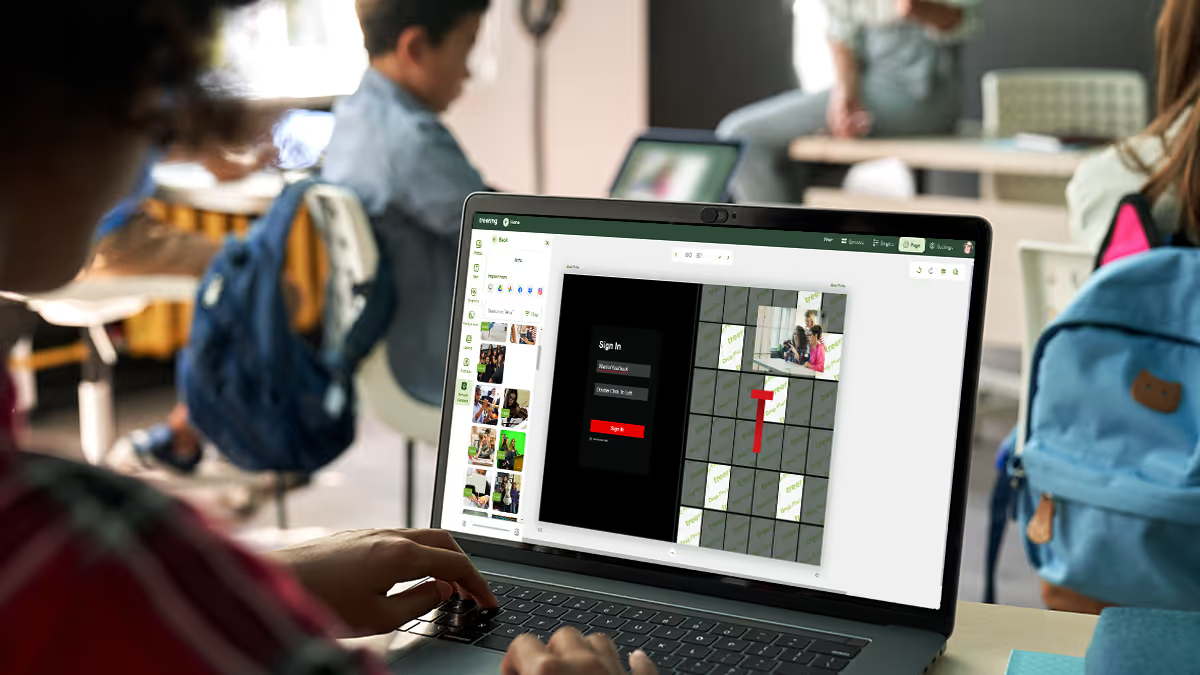
Treering's collaboration tools for your yearbook
POV is more than a social media trend, it's the call to reflect the diverse perspectives and students in our halls. So, how do you capture every student in the yearbook? Here's how we help you take control of crowdsourcing and collaboration with built-in collaboration tools.
Collaborate Using Shared Folders
After you decide what content you need, we help you organize the year with shared folders. There's no limit to how many you make.
We Love This Because You Can...
- Create one folder per classroom teacher
- Share email links to sports team folders for coaches and boosters
- Use #photodropFriday social posts to direct submissions to an event folder

Pull photos from Social Media
After taking a pic of our loved ones, our first instinct is to post and share it on our social channels, not with the yearbook coordinator. Treering Yearbooks' Facebook and Instragram integrations make it easy for your yearbook to get social.
We Love This Because You Can...
- Add your chaperone snaps to a shared field trip folder
- Build custom pages using your feed
Multiple Permissions Allows for Collaboration
Collaboration tools are a major component of our yearbook software on the design side as well. Yearbook coordinators and advisers decide the size and access permissions for their teams on an individual basis (we know there's no one-size-fits-all here).
We Love This Because You Can...
- Limit folder permissions for student yearbook team
- Assign a page or two to parent volunteers
- Leave notes on spread and lock completed pages
- Partner with the school photographer for the portrait spreads
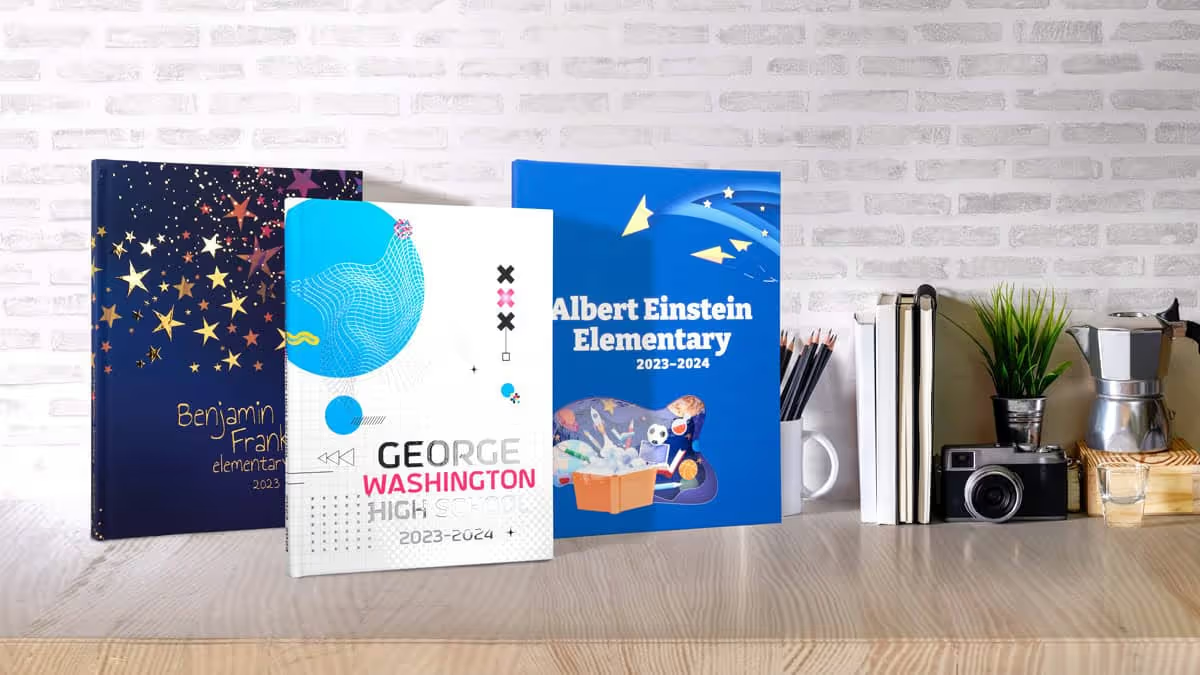
Treering yearbook printing: it lasts a lifetime
Stunning, Sturdy, Scuff-Resistant Covers
Hardcover? Check. Softcover? Yup. Soft-touch matte finish? Mais Oui! Glossy finish? For sure! Want to give your cover something a bit extra? We've got silver and gold foil to add a little more sparkle, and embossing options to add a little more lift. Whatever you and your students can dream up, we create using a superior quality laminate to protect your cover.
And they are all printed in the USA.
Completely Customizable Covers
Your cover can be as unique as your students. With the option of an 8.5x11 and 9x12 size book, you can have the flexibility to get your yearbook to look precisely how you want.
Though we have hundreds of professionally designed themes at your disposal, including our Heritage Collection, we won't limit your creativity. Hold a yearbook cover contest with your community; let your students decide what it should be. Ask your art class to come up with something representative of your year.
Sustainable Memories
In today's digital age, where everything happens on screens, it's amazing how a high-quality yearbook can seem so... special. We print better than HD quality photos on our 100 lb, sustainably sourced paper stock. Because we care about both the quality and global impact of the yearbooks we create.
Bound to Hold Your Memories Together for Lifetimes
All our yearbooks are bound with PUR Perfect adhesive to hold each page safely in place for a lifetime. Both hardcover and softcover books will stand the test of time. What's more, our softcover binding doesn't crack when you open it, meaning you can add your school name to the spine to make it look great on the shelf.
Moments are over in seconds, but memories—and your Treering yearbook—will last forever.

Treering's easy, yet powerful yearbook design software
Making a yearbook is a lot of work, but it can be fun too. We built our yearbook software to take away as much of the hard work as possible, so you and your yearbook staff can focus on the fun stuff. No more fighting with changes in portraits or keeping track of yearbook purchases; whether it's making your yearbook, managing your yearbook staff, or collaborating with your community, we eliminate the pain so you can focus on capturing your school's year in a beautiful yearbook.
Manage your yearbook program like a pro
Call it your very own mission control. Right from your dashboard, you can see who has purchased and who hasn't. See a running total of how much money you have raised for your school throughout the year.

Work from anywhere
For the parents in your community who are on the go, they can do everything from their mobile devices. They can add photos to your community's shared folders, design their student's custom pages, and purchase their student's yearbook while waiting in the pickup line.
Assign roles and permissions to your yearbook staff
Grant some users an all-access pass to your yearbook by making them the Chief Editor, or limit their responsibilities by making them a Staff Editor or Restricted Staff Editor. Some people on your yearbook team may only need to add photos or edit text, while others need more responsibility. The choice is yours!
Your entire yearbook staff will be able to edit only those pages you have assigned them, making it clear for the editors to understand their responsibilities and easy for you to manage in one place.
Make suggestions and share ideas on each page within the book. Get notified each time you go in to edit the book if there are new notes, comments, or questions to read.
Once a page is finished, the editors of that page can mark it complete. Now you know their progress (and the big picture). Your finished pages are safe from unintended edits.
Keep track of all your students
Treering's yearbook software will automatically build an index for your yearbook. Never again worry about making sure each student gets equal coverage in the yearbook, or trying to make the index yourself.
Never again worry if a photo has been used on a previous page. Or how many times each student is in the yearbook. With Treering you can tag students in each of your photos, and easily see which photos have and have not already been used.
Easy layout creation
Save time and easily create your yearbook with theme-driven, drag-and-drop templates. Powerful tools and an intuitive interface give you the easiest yearbook software you'll ever use.
Auto layout
Organizing photos perfectly on a page can be tedious, but it shouldn't be. With Treering, just select the photos you want on a page and our yearbook software will automatically drop them into a beautifully designed layou
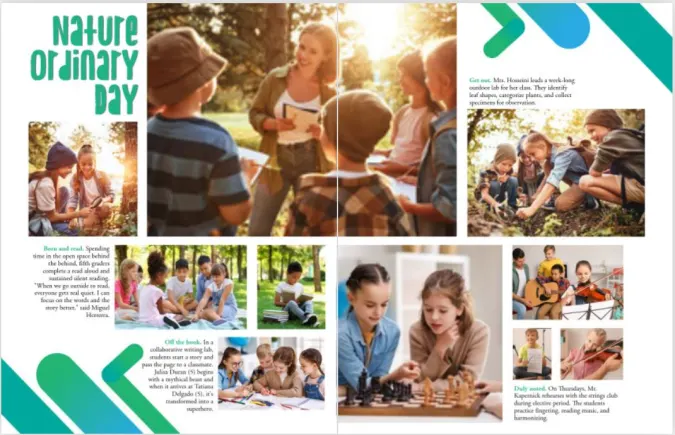
If InDesign is more your thing, no problem, you can upload all the designs you'd like.
Portrait auto flow
Point, click, grab some coffee. Yearbook portrait pages are no longer painful. Automatically arrange yearbook portraits. Customize the page layout. Make changes easily. Boom. Between 40-60% of your book is complete, and if you want to add more content to your portrait pages, you can.
Perfectly aligned photos in a snap
It is nearly impossible to manually ensure each photo is centered and aligned on a page perfectly. We've made it possible by adding gridlines that don't get printed, but make book-building a breeze. If you'd like to make it even easier, you can have all your photos snap to the grid. Oh snap! With this kind of precision, you'll feel confident knowing your book will look perfect.
E-commerce
Raise Money with recognition ads
Set your price per size, and let our yearbook software do the rest. When parents log in to buy the book, they will be given the opportunity to purchase one or donate one. Parents get to celebrate their children, and you get to provide your school some extra money to cover the cost of new cameras, field trips, or whatever you might need.
Online marketing and photo-sourcing
School community involvement in the yearbook is crucial, whether that's making them aware of how to buy the book, help contribute photos, or participate in the annual yearbook signing party, you need your community to be involved. We've got you covered from yearbook sales and online purchases to digital signature capabilities.
Crowdsource yearbook photos
Get more photos for your yearbook by sourcing them from your parents, students, and teachers. With Treering's yearbook software you can create shared photo folders to which your entire community can add photos.
Build your own shared folders for your yearbook staff to use for everything from retakes and doubles to sports and clubs. You can also create a private spot for just you and your yearbook editors rather than the entire community.
Upload photos from anywhere
We understand that all communities store school photos in different places, so we've made sure that our yearbook software will easily allow you to upload from anywhere. Facebook, Instagram? Yup. Google Drive, Google Photos? Got it. Or if you've got photos on your mobile phone or desktop, we can upload them from there too, whatever is best for you.
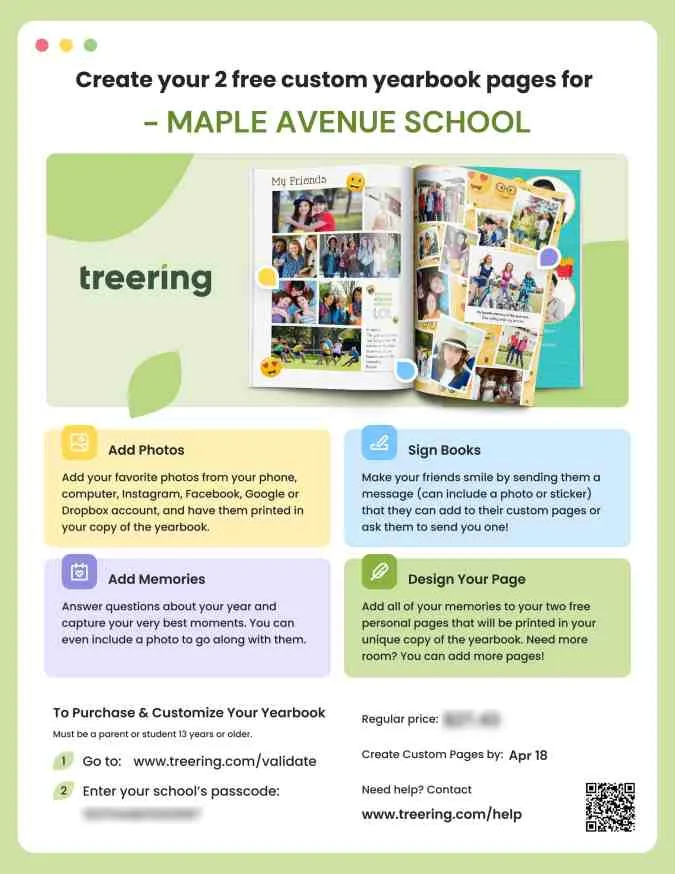
Yearbook sales made simple
Treering doesn't make your school commit to minimum orders meaning no financial pressure, but it's still something you'll want to do, so we wanted to make it easy. You can add links to your community's Facebook page. You can send emails directly to just those parents who haven't yet purchased. On top of all this, we have a bunch of professionally designed flyers for you to use. If you'd like to have some printed, no problem, we'll do that for free, cause fees just aren't our thing.
Keep your yearbook community accurate
Sometimes students change schools, or a parent accidentally creates two accounts. Our yearbook software helps you keep your community organized. You can quickly merge or separate student accounts, and add or remove students throughout the year as things change.
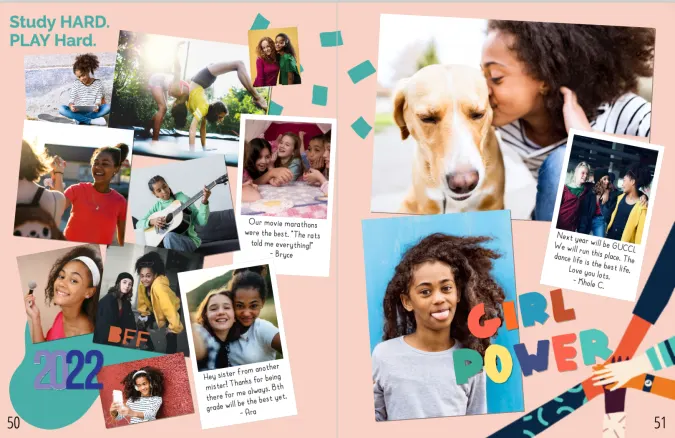
Even more to love
E-signatures
Technology has changed the way students socialize. With Treering's software, students can e-sign their friends' yearbooks with photos and stickers which can be printed on their free custom pages just in their yearbook.
Ensure consistent design throughout the yearbook
Set the theme, photo styles, text styles, and more in one place for your entire yearbook. Define all of it, none of it, or just some of it—whatever fits your yearbook style.
Favorites
With so many professionally designed templates, it could be easy to forget where you and your yearbook staffs' favorite ones are. Simply click the stars on the ones you like and they will all be in one spot moving forward.
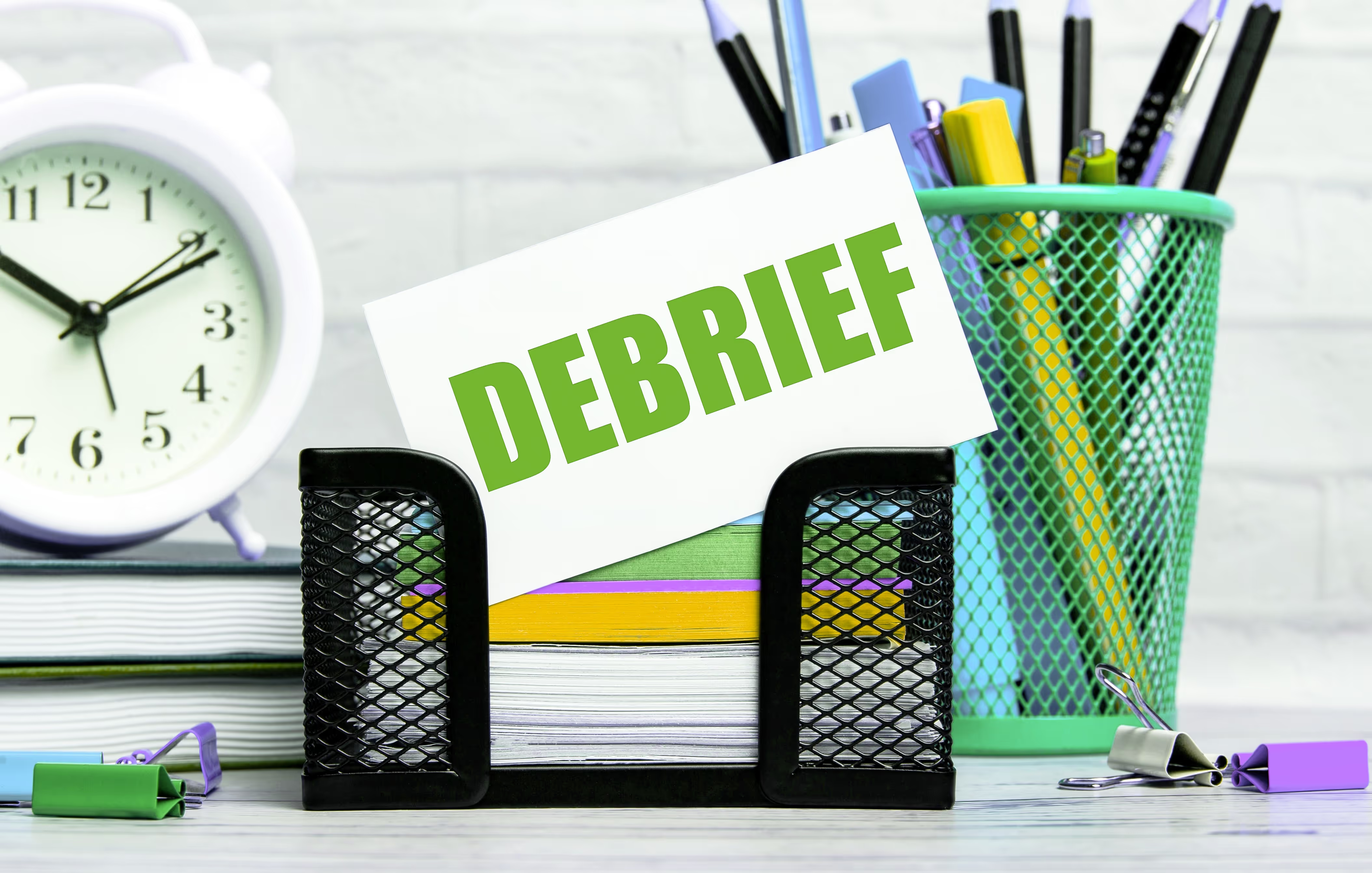
Yearbook debriefing: a summer reflection
Now that your yearbook is a wrap and there’s nothing but sunshine ahead, it’s nice to take some time to reflect on your achievement. You may not want to spend all summer analyzing your yearbook (and who does?), but here are some quick "yearbook debriefing" tasks to help set yourself up for the new school year:
Bask in your success.
You did it! We hope you feel accomplished, proud, and gratified. First and foremost, this is the perfect time to round up your team to celebrate a job well done. Whether it’s a picnic in the park, a backyard super soaker battle, a trip to a local amusement park, or a pizza party at the pool, gathering everyone together is a great way to close this chapter (pun intended!).
A shared celebration is a morale boost, a “thank you,” and a fantastic way to show everyone how fun yearbooking is as you ride that wave of camaraderie into the upcoming year.
Solicit and evaluate feedback.
Whether utilizing an informal compilation of comments or a more formal survey or meeting, it’s helpful to evaluate the yearbook from the experience of your school community. This process can include everything from design and content to distribution and will be invaluable during your yearbook debriefing.
While we all would prefer kudos to criticism (here are some tips for dealing with complaints), your audience's honest feedback is crucial to improving and enhancing your yearbook program. Additionally, considering suggestions and allowing people to feel heard goes a long way toward creating a solid yearbook culture.
Analyze growth opportunities.
When doing your yearbook debriefing, looking for ways to refine your process is essential. Did you and your team encounter any challenges building or marketing your book? Can you enhance your collaboration process? Is there room for improvement in your workflow or organization? If your timeline proved challenging, have you considered a company that allows you to control your deadline?
Lay the fall foundation.
Remember to take a few minutes to set yourself up for fall success by verifying details with your publisher (e.g., logging in to confirm your account for next school year). And if you would like to spend some time planning for your next yearbook over the summer, here are three steps to kick off another fantastic year of capturing your school’s spirit. Here’s hoping you can do all your prep work poolside!

8 things to include in your yearbook
Scroll through your yearbook ladder and try not to panic at page after page of emptiness. To help with planning, we compiled this list with the understanding that you would have the meat and potatoes of a yearbook:
New at this? Pick one or two to include in this year’s yearbook. As your tenure as an adviser grows, so can your repertoire of things to include.
1. Autograph space
This is why we throw yearbook distribution parties. It’s why we wait until the last vote is counted in the ASB election and last ribbon is awarded at field day. Three weeks after clicking “I’m Ready to Print,” boxes of books magically show up.
Autograph pages are easy to include in your yearbook: you use a pre-made template or design your own. It doesn’t have to be fancy.

2. Table of contents
This is the most underrated spread in the book, a table of contents is the must-have launch pad for the reference book that is your school annual. It’s also something that can take a few clicks to create, if you’re using a Treering theme.
3. Collage layouts
Many times, we see upwards of 60 photos slapped on a spread with no layout structure. The number of students covered is overshadowed by a chaotic layout.
https://blog.treering.com/collage-page-ideas/
PSA: Just because Treering offers layouts with up to 65 photos, doesn’t mean you should use them. Every student should be recognizable. Aim for their faces to be the size of a dime.
4. Superlatives
Superlatives—is Greg Heffley the only one who calls them “class favorites?”—are yearbook awards based on student surveys. These “Most Likely to…” awards highlight standouts.

Check out our list of 100 superlatives focused on creativity, character, and community contributions.
5. Year-in-review spread
Unless your yearbook is chronological, including a year-in-review spread is a way to increase storytelling. It gives a holistic overview of the year, both in and out of school.
School-level
A designated school year-in-review spread can feature images from events throughout the year, giving an overview of the activities and achievements across campus. Many yearbook creators love to use them for photos that may not have “fit” anywhere else or as a way to cover different students from saturated events pages.
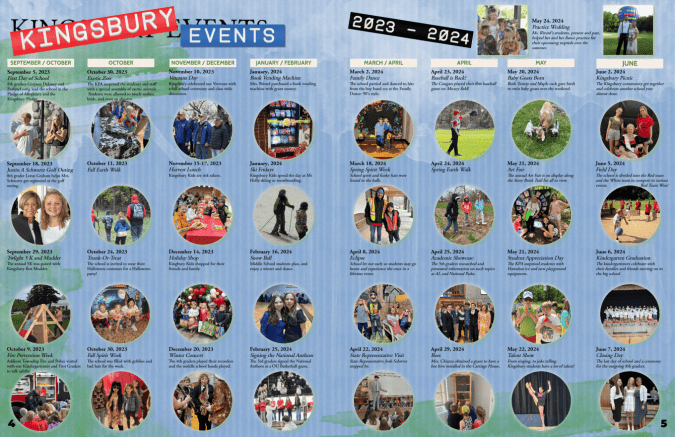
We adapted it. Search "calendar" under "all page templates" to include this in your yearbook.

World-level
Some schools include what happens beyond school walls on a year-in-review spread. To do this quickly, use Treering’s pre-designed one.

Yearbook classes and clubs that want to create their own should
Keep in mind: if your year-in-review pages include celebrities, logos, photos someone on your staff did not capture, even in educational yearbooks, you may run the risk of copyright. The Student Press Law Center has a digestible guide on fair use for student media.
6. Storytelling photos
Both classroom moments and hallway hangouts show student life on campus. It’s important to include candids, academic photos, and even lunchtime snaps to balance posed portraits.
7. Content on portrait pages
Another way to break up posed portraits is to include content on portrait pages.
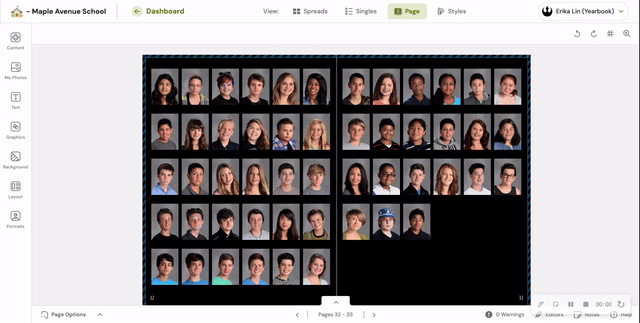
Shrinking your portraits to free up space for storytelling photos or even feature coverage, deepens your coverage and adds value to class pages.
8. Stories and captions
This is last on the list, not least on the list. Regulars to the blog have seen this charge before: If there is no writing in your yearbook, add captions.
Master them. Then, include expanded captions. Then, body copy.
No matter your team size, you can include extras in the yearbook that elevate it beyond a photo album and make the difference between a book that gets browsed and one that’s cherished.

How to bid a yearbook
School finances are tough. Compound that with murky yearbook invoices, and you’re left repeating, “I don’t know,” when meeting with the school finance clerk. Between boxes of “extra” yearbooks that will sit in a storage closet instead of a student’s shelf and a final invoice amount that differs from the initial bid, it’s a pain.
Many yearbook creators tolerate vague yearbook pricing because the thought of going publisher shopping is a worse evil. It’s not until we hit our breaking point with one of these:
Yes, it’s a memory book, and it gives all the feels. One of those feels shouldn’t be a burden.
Understanding itemized bids
Shipping, art fees, camp costs, and proof charges may appear as line items on a final invoice. They don’t always appear on yearbook pricing proposals. That’s why you must be proactive when soliciting different yearbook publishers for a bid.
Pro tip: include your current publisher in the bidding process.
The timeline: when to look for a new yearbook publisher
It will take about a month or two to complete the bidding process. Beginning is simple: define your needs and non-negotiables to share with each publisher:
Allow two to three weeks to evaluate the bids, ask clarifying questions, and get everything in writing. Align this with your school’s budget process for best results.
The bid: what to expect when you’re expecting
The scope of your bidding process differs if you are shopping for a single school vs. a district. (More on district bids below.)
Schools should consider specs, staff needs, and budget when soliciting bids. Your bid should include
Add it all up and divide by your contracted minimum for the per-book price. Oftentimes, these costs of doing business increase your core book price by $2-12 each. And if yearbook math wasn’t your college minor, there is another way.
The treering difference
When yearbook creators receive a bid from Treering Yearbooks, it includes a per-book price with no minimum order. The core book price is based on cover finish and page count. It includes:
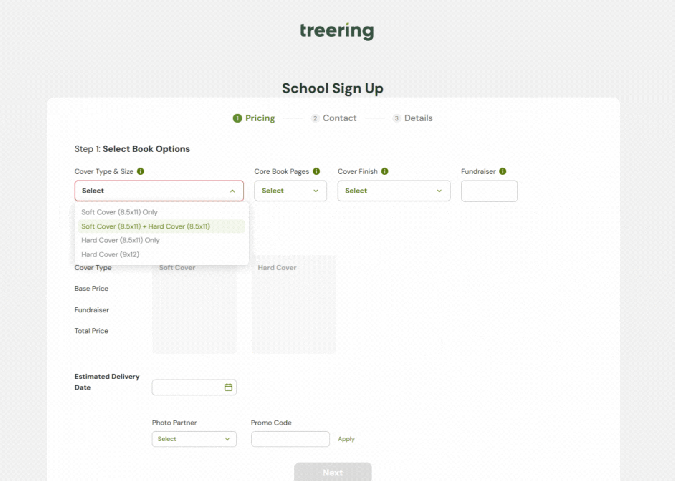
That’s it.
How to evaluate yearbook bids
It’s safe to say most yearbook companies will look fab on paper (or spreadsheet). Resist the temptation to choose on price alone. By personalizing the process, you position your yearbook team as the leader. Your publisher should work for your program.
1. Talk to other users. Each company should provide you with three users from a similar situation. Consider size, quantity of yearbooks ordered, and staff structure. Not only will you hear individual experiences, but the synergy of the reference will show whether or not the publisher understands your situation.
2. Do a trial of the software. Spend an hour playing with any proprietary software tools. Are you able to create a sample page? Do you know how to find self-service help?
3. Define your publisher support team: who helps with technical questions, how you find design inspiration, and who is training your team. If you have an individual servicing your account, define the role your rep will play and how you expect the rep to support your yearbook creation process, including expected response time.
Finding the right fit for your campus will take time. Trust us: it will be worth it when you have your Cinderella moment.
Navigating an RFP
Those who represent a larger group have purchasing and negotiating power. Learn the requirements in your district or state before you solicit bids. You may not even need to bid because your school may have more flexibility than you thought. Or, if there is a purchasing cooperative in your region, your school may be able to piggyback on a neighboring contract.
If you are managing a bid for multiple schools, create an itemized list for each site's individual needs. For example, a high school may want a hardcover 9x12 book, and an elementary school may want to offer hardcover and softcover 8x10s.
Treering works with each district’s process, whether it’s co-ops, POs, invoicing, or vendor approvals. Each RFP is customized to the needs of the schools within the district. (We’ll leave the templates for easy yearbooking design.)

The one-stop yearbook rubric shop: grading tools for design & copywriting
A yearbook grading rubric is the perfect way for teachers to give students the grades they deserve and the feedback they need to make a better yearbook.
Heck, even if you’re working with a bunch of volunteers and want to formalize your process around feedback, a yearbook grading rubric is pretty much the way to go: it’s the most holistic way for you, the adviser, to provide critical feedback to your staff. For the younger students you’re working with, this will lead to growth; by their senior year, these kids will be ready to skip right over college and head straight to Sterling Cooper.
To help give your grading and feedback game a jump start, we’ve developed two free yearbook grading rubric templates that you can use for your class or club. One’s focused on yearbook copy, the other’s focused on yearbook design.
Before we jump into the templates themselves, though, we’ll break down why we’ve structured the rubrics the way we did and what you can gain from using them. So, read on.
Anatomy of a yearbook rubric
If you’re a teacher, you’re probably familiar with rubrics. (In fact, if you’re a teacher who uses rubrics, you’re probably more familiar with them than we are; you’re also probably able to skip this section.)
If you don’t know rubrics, though, this section here is a short crash-course for you. I’ll be helpful for understanding the templates we’ve put together for you.
Generally speaking (and specifically speaking in terms of our yearbook rubric templates), a rubric consists of three core areas: Scale, criterion, and performance level descriptions. Let’s break each of them down.
Scale
The scale represents the total number of points available in each category as well as the aggregated total (the final grade). Instead of just applying numerical values to each level of performance, pair each possible point on the scale with a narrative equivalent. For example, if the maximum number of points that can be earned in a given criterion is 4, then 4 = Exceeds Expectations. Conversely, in the same scenario, a 1 would be equivalent to “Does Not Meet Expectations.” You can play around with the actual wording in the scale you choose.
Criterion
Where the scale represents the number of points, criterion are the categories by which a piece of student work is assessed. They can be altered , as long as you can clearly distinguish between the levels of accomplishment on your chosen scale. For example, if we’re assessing a student’s ability to write a headline for a page, there should be a way to objectively measure what an “A” headline looks like versus what a “C” headline looks like. If there isn’t, reconsider including it as a criterion (perhaps it can be combined with one or more other facets of the page instead).
Performance Level Descriptions
A rubric is broken into quadrants. In the examples we’ve provided, the vertical headers represent the criterion and the horizontal headers represent the scale. The points of intersection are the Performance Level Descriptions, or PLDs. These are the characteristics that make up a grade. Try to use highly-specific language so that students are clear on what separates good work from work that will truly blow you away.
If your PLDs are fully fleshed out, we suggest giving your students your yearbook rubrics in advance. This gives them an idea of what they need to do in order to earn the grade of their choosing, which can positively impact the quality of their work.
Miscellany
Don’t forget to include:
- The student’s name
- Page numbers, or spread, being assessed
- Total points
With that quick review out of the way, let’s dive into the actual yearbook rubrics.
Yearbook rubric for grading copywriting
When it comes to yearbook copy, striking a balance between originality and uniformity is key: Too rigid and your yearbook won’t engage. Too much creativity expression, and it could end up looking like an anthology of erasure poems.
In the downloadable template we’ve created, the categories for assessing yearbook writing are: headlines and subheads, body copy, captions, adherence to style guide, and originality. Let’s take a closer look:
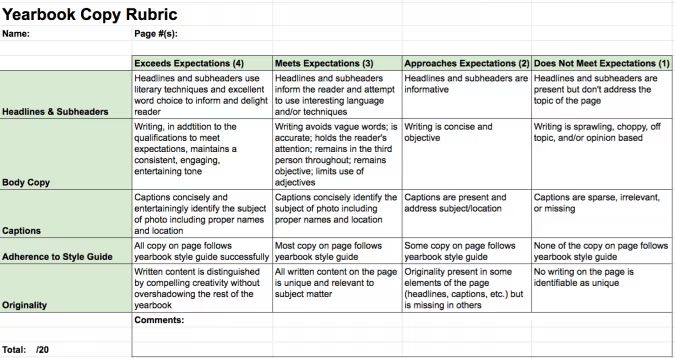
Get the Treering Yearbook Copy Grading Rubric here.
By assessing the writing on each page, you achieve two things. First, you give your students a tangible grade for their hard work. Second, you can vet the copy on every page of the book, which gives you an idea as to how everything fits together tonally and whether the book as a whole adheres to your established style guide.
Yearbook Rubric For Grading Design
While assessing writing is straightforward, design can feel subjective; we can’t all be trained art critics, creative directors or teachers, after all.
In the downloadable template we’ve created, the categories for assessing yearbook page design elements are: typography, color, photographs, adherence to style guide, and cohesiveness. Let’s take a closer look:

Get the Treering Yearbook Design Grading Rubric here.
As a result, you might be tempted to break the elements of design into a handful of granular rubrics (one for photography, another for layout: you get the picture). While there’s nothing wrong with doing this, developing a rubric that takes everything into account is a better approach.
Here’s why:
Ensuring that the individual elements work in concert is as important as the quality of those elements in their own right. For those for those classes where the principles of design are just beginning to be explored, this is important. Focus on the whole first, then the specifics later.
If you’re teaching a yearbook course and need to grade your staff on their work, rubrics are the perfect way to do it. If your staff is composed of after-school volunteers who won’t be graded on their work, rubrics like the one’s we’ve included above can be a fantastic way to provide actionable feedback and ensure high quality design and copy on every page.

2025 yearbook cover design contest
Scoop, there it is! You covered the year, and now it's time to show off your work. With the books printed, passed out, and signed, we're kicking off our first-ever cover design contest. What's even cooler: Three yearbook teams will win Back to School Bashes for their entire school!
Cover Contest Entry Period
Treering will accept submissions in each of the three categories from May 27 to June 10, 2025. The submission window closes at 11:59 PM PT.
Who Can Enter?
Entrants must be 18 or older and a Primary Chief Editor or Chief Editor at a US Treering school for the 2024-2025 school year. The school must also have an active Treering account for the 2025-2026 school year to redeem the prize package.
The winning schools must also submit three videos and six photos using a provided shot list for use on Treering's social media. A school official must sign a release to redeem the prize package.
To participate, complete the submission form and share a screenshot or photograph of the front and back of your yearbook cover.
Incomplete and multiple entries will not be considered.
Winner Selection and Notification
A panel of yearbook parents, journalism educators, and graphic designers will select the winners. Judging criteria include wow factor and creativity in one of the following three areas:
- School Spirit - mascots, school colors, and anything else that shows off your community
- Theme Development - an introduction to your visual and verbal theme
- Elementary Student Art - original art by K-6 students
We will notify all the finalists via email and phone on Monday, June 16, 2025. To meet prize eligibility, a representative from each school must complete the media release and agree to share video and still photos from their Back to School Bash.
Winners must redeem their prizes by October 31, 2025.
Prizes
All winners and finalists will receive 10 free yearbooks for the 2025-2026 school year.
The grand prize winner in each category (School Spirit, Theme Development, and Elementary Student Art) will also win a Treering-sponsored Back to School Bash.
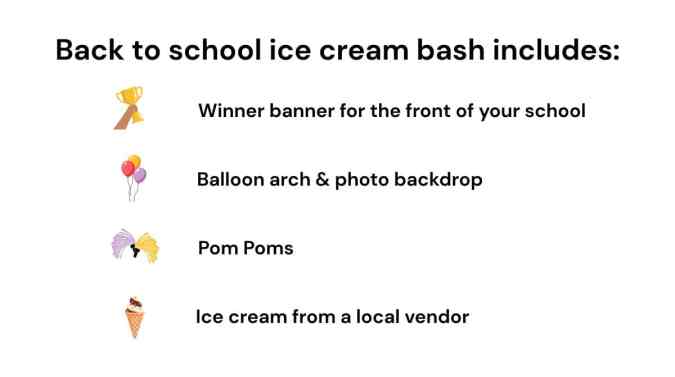
*Quantities based on the enrollment reported in your 25-26 Treering account.
Release
By submitting your yearbook cover, you have verified the approval of the original artist and anyone pictured, and you approve Treering to use your name, write-up, and school name for any marketing purposes, including but not limited to treering.com, social media, and mass media.
Contest FAQs
Didn’t you guys already do a design contest?
Yes! We wrapped up a spread design contest in March and a parent custom page contest in April.
The focus of this contest is yearbook covers.
Our cover is a secret until we pass out the books. Can we still enter?
Of course! Keep in mind, if you win, we will show off your cover on social media and our blog starting July 1, 2025.
I’m not 18. How can I enter my cover design?
Only Primary Chief Editors or Chief Editors who are 18+ may enter on behalf of the school.
A student designed our cover. How can we participate?
We will require a signed media release from the designers’ parents before a winner is announced.
Do I have to have social media to enter?
You do not need social media to enter our inaugural cover contest.
Can I enter more than one category?
No, you may only enter your yearbook cover in one category. Please choose School spirit, theme/visual identity, or elementary student art on your entry form.
How do I get a list of all the winners?
Treering will publish the winners between July 1-3, 2025, on the blog, Facebook, and Instagram.
Do I have to purchase a yearbook to enter?
No purchase is necessary to enter.
Can I enter any yearbook cover?
The contest is for 2024-2025 school year covers.

Yearbook staff application template: sign-up volunteers now!
A yearbook staff application might seem like an overly formal, entirely unnecessary step when recruiting students to help with the yearbook on a volunteer or after-school club. It’s not.
Sure, an after-school yearbook club creates a low-stakes environment for students to unleash their creative energy and to learn some awesome new skills, but it can also create problems: One, you could end up with more students than any sane adult could ever hope to manage; two, without a grade hanging over their heads, students could lose the motivation to finish their work. In some cases, you might end up dealing with both.
That’s why you need to use a yearbook staff application.
A yearbook staff application is essential to putting together a dedicated, enthusiastic team of student volunteers, and it lets you achieve four key things related to your yearbook recruitment and planning before you even have your first meeting:
- You identify the yearbook club roles you need, and how many people you need to fill them.
- You limit the size of the staff you need to complete the book.
- You attract students who are actually interested in doing the work needed for the yearbook.
- You find out what your students are good at and interested in before getting started.
Read the rest of this post, and you’ll know exactly when you should use a yearbook staff application and what to look for in student volunteers. The payoff? A yearbook staff that’s exactly the right size and that will stick around until it’s time to hand out the yearbooks.
When to use a yearbook staff application
In a perfect world, yearbook club would be an open door, where anyone who wants to participate could just walk in, take a seat at a computer and start plugging away at whatever needs to be done. But we know that can’t always be the case.
Here, then, are the times you’ll probably find yourself needing to use an application process as you recruit your students:
- Demand outweighs supply. As in you have too many students interested in the yearbook. We’ve seen this happen at schools where the yearbook is a big part of school culture. So many students are geeked up about the yearbook that it seems like nearly everyone at the school is itching to help make it. But if you have everyone help and there’s not enough work to really go around, you can end up with disgruntled group. Not fun.
- Eager starts end with empty seats. As in you have the right amount of students at the beginning of the year, but they drop off, one by one, until you’re left with a few dedicated (and soon to be overworked) students. If you’ve ever experienced this situation, you know how stressful it can be.
- Everything feels like a disorganized mess. As in you know what you need to get done—and you’ve got the students to help you—but you don’t know who’s going to do what or how anything’s going to get done. It’ll sort itself out, like it always does, but for a few days, maybe even weeks, it’s a nerve-wrecking beginning to yearbook club.
In these situations, a yearbook staff application can sort of serve as a bouncer at your open door.
You’re not necessarily using the application to weed through students and pick your dream team; you’re using it to find out who’s really into the yearbook and who isn’t. By giving students a little extra work up front, you’ll more easily find those students who are ready to do the work and you’ll more easily know which parts of the yearbook they want to help with.
Sure, it’ll reduce the number of student volunteers, but it’ll also increase the likelihood of you having a highly motivated team.
The 3 things to look for in yearbook staff applications
Just because the yearbook staff application is serving as a “bouncer,” it doesn’t mean you should review them. There’s lots of good stuff in there, and it can help you better understand your students and their motivations for joining the club.
So, you should read them. And, when you do, look for these things:
1. Did they complete the application?
This is fairly basic, but check over the whole application to make sure it was actually completed.
If a student scoffs at the idea of applying to work on the yearbook, or they crumple and toss the application into a backpack abyss, what are the chances that they’d be a committed contributor?
Sure, you could have an incredible photographer in the building who shuns formalities like “applications” and “attendance” in the name of art. By and large, though, an application is a great way to gauge future commitment and get to know your staff.
2. How do they fit the puzzle?
You need a diverse yearbook committee. Roles you need to fill include (but are by no means limited to):
- Photographers
- Designers
- Sales & Marketing Pros (those kids tweeting in the hallway between classes are about to become your best friends)
- Editor(s), for written work and images
- Interviewers/journalists in training
- Jacks & Jills of all trades
These students are going to be the lifeblood of yearbook, and getting to know their strengths and weaknesses at the beginning of the year can save you major stress down the road.
On your application, make sure you create a space for students to designate any skills or interests they might have. It’s also helpful to ask students which skills they’d like to develop.
Not only does this help you get to know your staff: it give you an idea of the roles underclassmen could fill the following year, too.
3. Is yearbook a priority?
Students are spread pretty thin. With stuff like school work, sports, Pokemon Go, and part-time jobs and at-home chores, it can be hard to commit to another activity.
Your yearbook staff application should ask students to be honest with the amount of time they can give. Just because a kid is busy doesn’t mean he or she can’t contribute in a unique and useful way. By using the information provided on the application you can set realistic expectations on an individual basis, ensuring a well-rounded, happy staff.
Set the tone when distributing applications
When students come to you for applications (you know, that time in the day when you tell them just how fun yearbook club is), be sure not to sugarcoat the experience.
You should absolutely highlight the fact that working on the yearbook is rewarding and allows for the application and development of skills (photography, editing, design, interviewing, and so many more), but this shouldn’t be an outright sales pitch. Be open and honest. Your goal should be to build enthusiasm amongst your prospective staff members while also making it clear that creating a yearbook takes work.
If you think that attending every club meeting is important, make that clear; if you want students attending as many school events as possible, tell them upfront; if you’re willing to be flexible on attendance, but expect work gets done at home instead, let them know that, too.
Setting expectations, in terms of attendance or general contributions, is a great way to establish which students are going to take things seriously and who’s on the fence before you even hand them an application.

5 yearbook volunteers to recruit
The first step in creating the perfect yearbook is recruiting your ideal yearbook volunteers. In a perfect world, each group member will bring a unique set of strengths to the table while working cohesively with one another. We’ve identified five personality types to consider as you begin assembling your “dream team,” along with best practices for guiding them along the path to print-ready.
1. Mom-a-razzi
There may be a parent or two on campus with professional photography experience, and that’s super. It’s no longer a requirement with many smartphones. For the scale of your yearbook project, you may need a class or grade parent (think an old-school journalism beat).
These parents are taking photos already, so you’re not challenging them beyond a simple, “Please take photos of other people’s children.”
Remember, you can easily build a yearbook if you have the content.
2. The Gatekeeper
If your team is not comprised of students and fellow staff members, you need an on-campus stakeholder on the VIP list. This person will be able to get you the inside scoop on school happenings, including the best way to sneak into classrooms for academics photos or how to set up shared photo folders with the faculty.
3. The Social Maven
Part yearbook hypeman, part yearbook marketer, this person will be in the know: stories, events, and students. She will take care of your sales campaigns and make sure everyone knows how, when, and where to buy the yearbook.
4. The Type-A Virgo
Do you want your yearbook to have a cohesive look? Do you want pages proofed and copy-edited? The Type A Virgo is your go-to for organization and project management.
5. The Cruise Director
While this yearbook volunteer isn’t the captain of the proverbial ship, his role as designated fun officer is clutch. He’s collaborating with the Social Maven on your next marketing campaign and coordinating a yearbook distribution party with school staff. (More than likely, this person is also in charge of several other committees to build community and school spirit.)
Managing Yearbook Volunteers
Now that you’ve identified your dream team, here are a few tips for managing the workload.
1. Create and Communicate the Plan
Build a project plan to determine your deadlines, tasks, and roles. We love beginning with a yearbook ladder to identify coverage and determine the yearbook page count.
2. Follow Up, Follow Up, Follow Up
Monthly check-ins, volunteer work nights, and ongoing communication help ensure the job you started will be completed. We’ve heard from volunteers that they feel their work is valuable with regular communication and seeing their contributions in action. Because their time (and yours) is valuable, make sure communications
- Are timely: give yearbook volunteers what they need when they need it. Only the Type A Virgo needs her March responsibilities on September 14 (and we love her for it).
- Have a set goal: predetermine the action(s) the team should take as a result of your communication. Do you need responses for the potluck or help tagging photos?
- Demonstrate appreciation: while I’ll never grow weary of hearing I’m awesome, meaningful feedback resonates much more. In your communications, try to highlight contributions often (e.g., “Because of all the Fun Run photos Tameka and Evelyn uploaded, Javier is now designing the layout! Thanks, team!”) and show how they benefit the yearbook.
3. Celebrate Often and Address Problems Early
When pages are locked, celebrate! When portraits are uploaded, celebrate! These festivities can be as simple as meeting for coffee after drop off or a dessert night in someone’s home.
Conversely, if things aren’t working out, be like Vanilla Ice and solve it.

Traditional vs. trendy
When beginning to develop your yearbook theme, the choice of a traditional or trendy theme determines the layout design and the overall feel of the book. Many see traditional and trendy as opposing ends of a design spectrum. We hope to show you how you can fuse them as you create your yearbook theme.
Traditional design
Traditional yearbooks can be timeless. Their design structure is safe and predictable, easing readers through each turn of the page. Their appeal is not limited to students: parents, teachers, and alumni also feel included.
When following traditional design, design elements such as consistency, repetition, alignment, and proximity bring beauty and order to the design. Everything has a place and a purpose.
Some may argue that traditional design takes away from creative freedom, and they opt for the opposite: a yearbook led by a visual trend.
Trendy design
Inspired by a new social media platform or pop culture movement, trendy yearbook themes can be the creative equivalent of a blank check. Graphics and layouts can be playful, dynamic, buzzworthy, or a combination of all three! The immediate response from the student body is reactive, in a good way, because a trendy theme is an in-the-moment one.
Beyond hashtag sensations, fashion and art trends may drive the visual concept. Retro, scrapbook, and organic yearbook themes capture the spirit of students. Each conceptually has an authentic vibe and pushes traditional design norms by being more aligned with a DIY ethos.
Cons of using a trendy yearbook theme
Because they are deeply connected with a visual concept, they may not be fully developed verbally, leaving the theme concept feeling unfinished. While trendy yearbook themes immediately connect with the student body, they may also quickly feel outdated.
Take a look at these three tech-inspired Treering themes. Each captures a specific moment over the past ten years: the advent of "likes," virtual classrooms, and a glow up.
How to choose?
The best way to select a visual identity is to begin with the verbal. What story do you want to tell? Why?
Think about longevity and what value you want the yearbook to have in ten years or more. Determine if you want to create another volume in your school’s legacy or capture a specific moment.
Classic and current: a blended approach
A traditional book can feel dull with page after page of safe design. Conversely, a trendy book without proper hierarchy and balance feels chaotic. That’s why we advocate for trend-forward with timeless structure; it’s the Hannah Montana of yearbooks. Traditional design grounds the book, and trends bring it to life.
Ideas to blend traditional and trendy design:
1. Font pairings: Use contrast to create your headlines
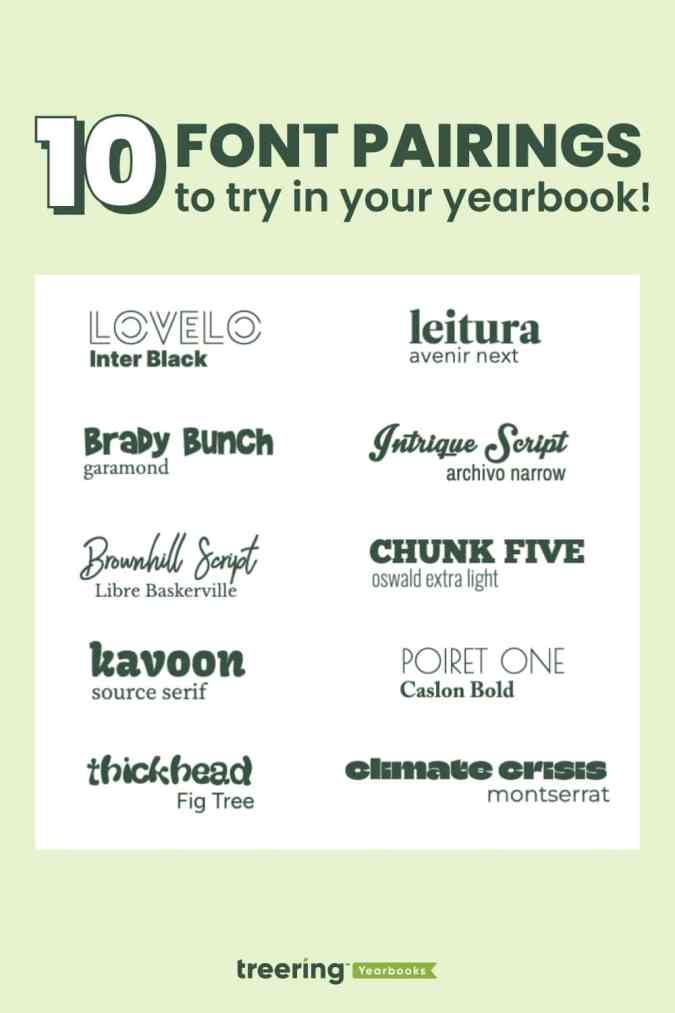
2. Color palette: Add a pop of color to a traditional color palette
3. Visual “hits”: Use up to three elements throughout the book to add variation

4. Showstopper spreads: Punctuate portrait pages with a highly visual spread
5. Trending treatment: Add a photo treatment to break up a traditional layout
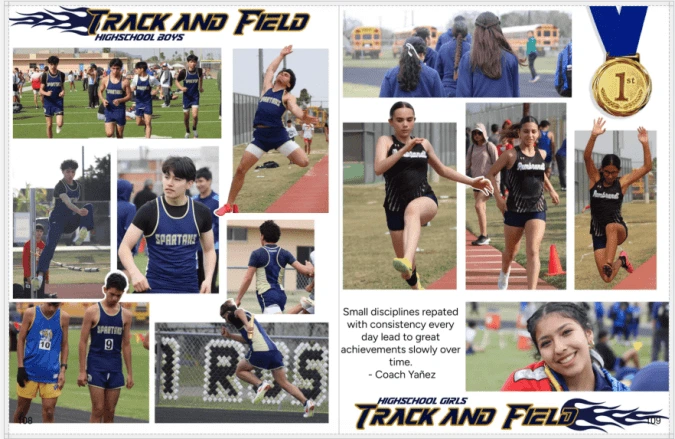
Keep in mind, great design never goes out of style. And, when paired with quality captions and copy to tell the story of the year, that’s what makes your yearbook stand the test of time.

